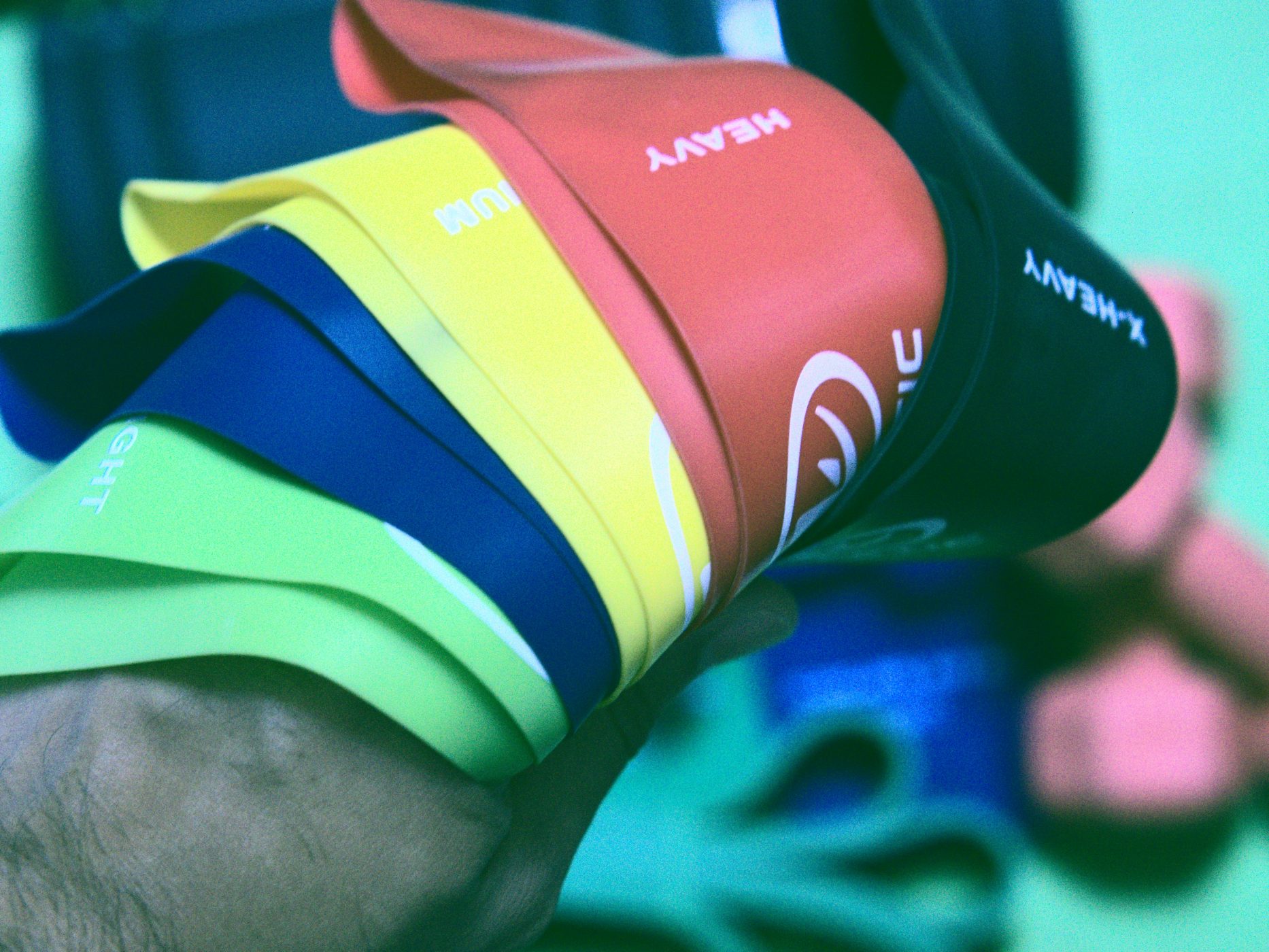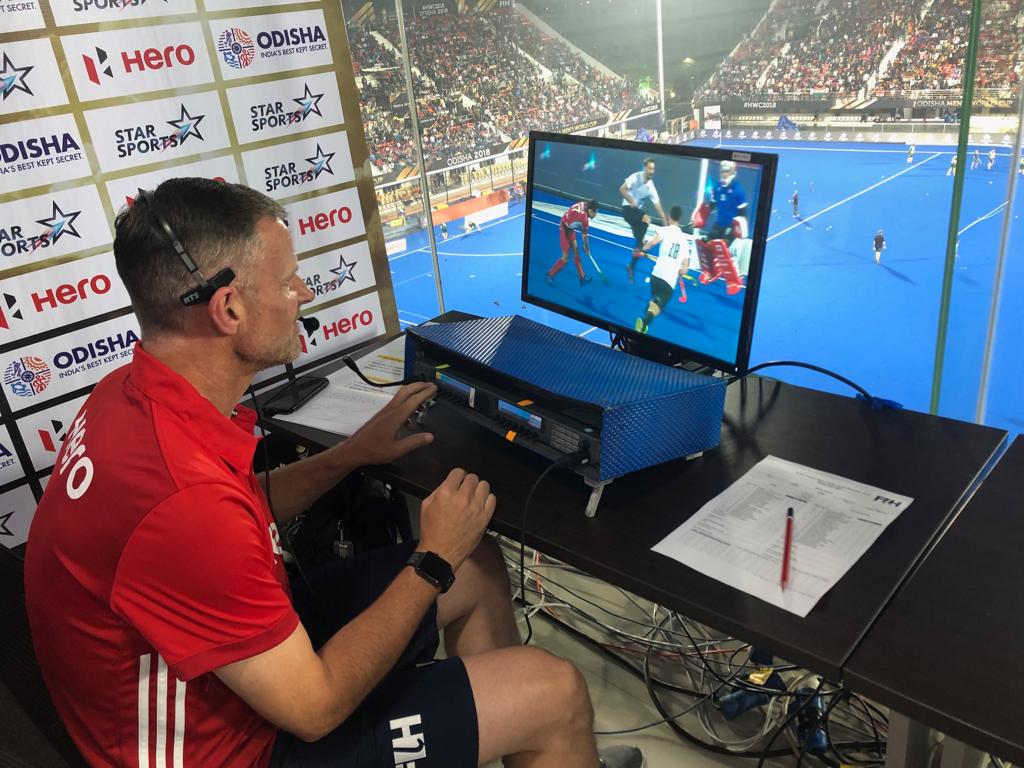HIIT – High Intensity Interval Training

Can I let you in on a little secret? Just between you and me…
I HATE running.
I do it when I have to, but I don’t really enjoy it. Now don’t get me wrong, I don’t hate exercise or working up a good sweat. I just hate running for the sake of running. Get me to run while chasing a ball around and I’m as happy as Larry (who is Larry btw?). But asking me to go for a 5 or 10 km run? Naaaahhhhhh. I’ll pass, thanks. I’m telling myself “just make it to the next tree” before you can even say “Rhiannon, you’ve only run 100m… pull yourself together”.
And I know, I know, it’s a mental thing. Some people are happy to run for hours. It clears their head, makes them feel strong and happy. That’s just not me.
But fitness is becoming more and more important for umpires as the game gets faster. Those games that go end-to-end for 70 minutes that keep us doing 50 metre shuttles or those sneaky strikers on a fast break that make us wish we were Usain Bolt…? Yep, we’ve all been there. Making sure you’re in the right place at the right time is super important and having the fitness to keep doing those 50 metre shuttles is a big part of being in the right place.
So, how do I keep my fitness up if I don’t really ‘do’ running? In this post I’m going to introduce you to one of my absolute favourite ways to train. HIIT! You might have already heard of it, you might already be doing it or maybe you have literally no idea what I’m talking about. Either way, this article will explain exactly what HIIT is and gives you some great examples of how to incorporate it into your training! Let’s get sweaty!
HIIT – High Intensity Interval Training

What is HIIT?
HIIT stands for High Intensity Interval Training. It’s basically short bursts of maximum effort exercise followed by a quick break.
You should be putting in your best effort during the work intervals in order to get your heart rate into the 80-95% zone of your maximum heart rate. Then you get a short break! Yay! These rest intervals vary in length but are generally either the same length or shorter than your work interval. Then you go again!
Using the ‘talk-test’, it should be very difficult for you to keep up a conversation through the work intervals.
Why is HIIT so good?
-
Pack it in
One of the reasons I love this kind of training is because it packs a punch! We are all so busy these days with work, study, hockey, family and other commitments that it can be hard to prioritise fitness at times. Trust me, I know the feeling! HIIT allows you to really work up a good sweat in a short amount of time, so that you can still do all the other things you need to do without compromising your fitness goals. Win-win!
The best HIIT sessions go for around 10-25 minutes, which when paired with a warm up and cool down, hits the 30-45 minute workout sweet spot for me. I can fit this session in before work in the morning (if I get up early enough, which is a different story…). I can also fit this in when I get home from work without having to set aside too much time before I can crash on the couch with the latest Netflix series…
(I wish that’s how my life went. Reality check – cook dinner, do housework, work on the blog, hockey training, supermarket run, etc. You know how it goes.)
-
Mix it up
You can also pair HIIT with other training sessions if you have more time. Add it before a strength session or an easy run to really get the most out of your workout time.
HIIT training is also great because it’s so adaptable. You can do it anywhere – it doesn’t necessarily require equipment. At home, in the gym, in the park, on the track. You name it. If it’s too cold or wet outside, stay in and do a HIIT workout. Cracking sunset happening outside? Get yourself down to the park, beach or sports oval and smash out a session. Prefer the gym environment? Claim a free space corner for yourself or plan out a circuit on the equipment.

What does a HIIT workout look like?
The HIIT part of your workout should go from 10-25 minutes. With a warm up and cool down you can smash out a session in under 30 minutes, or mix your HIIT with strength or cardio to make a longer session. The actual HIIT format is very flexible with both the type of exercises you do and the timing format:
-
Exercises
The best thing about HIIT! You can adapt it to almost any type of exercise. Doing things I enjoy makes me love these sessions, and mixing it up keeps it interesting so that I keep coming back for more. Some examples of HIIT training can include:
- body weight movements (skips, lunges, squats, jumps, etc.)
- sprints (normal sprints, hill sprints, sand sprints, bike sprints, etc.)
- jump rope skipping
- cycling
- swimming
- weight lifting (always with proper form!)
- plyometrics (jumping in all directions, running with resistance, etc.)
- group games (tag chasey, relays, ultimate Frisbee, touch football/rugby, etc.)
- group fitness classes
- multi-mode training on equipment (rowing machine, treadmills, ellipticals, etc.)
-
Timing
One of the most common formats, and in my opinion one of the best, is the Tabata style of 20 seconds max effort, 10 second rest. 20 seconds is about as long as you can maintain a 90-100% effort, so I think you really aren’t cheating yourself with this format. Give it all you’ve got knowing that it’s (a) only 20 seconds and (b) you get a break. The 10 second break allows just enough time for you to get your breath back without letting your heart rate drop too much. You can always extend the break to 15-20 seconds if you need.
Another example for HIIT timing is doing a ratio of 1:1, which may be a 40 second, 1 minute or even 3 minute hard work period followed by an equal recovery period. Make sure that for the longer time intervals you do ‘active’ rest though (i.e. easy jogging or walking), as you won’t be working at 100% for 3 minutes, so you probably shouldn’t be at 0% for 3 minutes either.
-
Example workouts

My absolute favourite HIIT workouts are done by Fitness Blender. I’m not affiliated with them in any way, they don’t pay me to say this, I just think they are great and want to share them with you. All of their workouts are completely FREE and available through their website or on YouTube. They do the whole workout with you in the video so you feel like you’re not working out alone or that even have your own personal trainer egging you on! You can even get the written plan of each session in case you can’t do it along with the video. There are so many different kinds of sessions and you can choose the best one for you depending on the intensity, total time, focus area, training type, trainer preference, etc.
Here are two of my favourite Fitness Blender HIIT workouts. Neither of them require any equipment:
- 32 minute HIIT cardio (warm up and cool down included)
- Quick 10 minute lower body tabata HIIT (NO warm up or cool down included)
If you prefer to plan your own workouts, that’s totally fair enough. Get creative with your sessions! For example, a HIIT workout using a stationary exercise bike could consist of 30 seconds of cycling as fast as possible against high resistance, followed by several minutes of slow, easy cycling with low resistance. Or in the pool, swim 1-2 laps flat out, followed by 1-2 laps slowly. Or create a little circuit in your backyard, living room or local park with some sprints, push ups, jumps, skipping and burpees.
HIIT can even be low impact if you are recovering from injury or have trouble with your knees, ankles, etc. It can also be adapted for beginners with the right types of exercises and intervals. If this sounds like you, use low impact exercises (no jumping) or adapt the workout to suit your needs to avoid problem areas. Play around with recovery times if you need or add weights to increase the effort. Just make sure you’re working hard during those effort intervals!

What are the benefits?
- Increase in fitness (improved in VO2 maximum – the amount of oxygen you can access during intense exercise)
- Increased endurance
- Increased type 2 fast twitch muscle – useful for speed and power
- Boost in metabolism
- Increased insulin sensitivity – which is the body’s ability to use glucose during and after exercise = better access to your body’s fuel stores
What else do I need to know?
- You shouldn’t be doing HIIT more than 3 times per week or 2 days in a row, in order to let your muscles recover. HIIT workouts are generally more intense than more traditional cardio workouts. As such, you need a longer recovery period in order to let your muscles repair – over training, particular with HIIT, can open you up to injury and no one wants that!
- If you are considering giving HIIT a try make sure you are cleared by your doctor or physiotherapist first, especially if you have previous health concerns or injuries.
- Remember that HIIT is relative to our own fitness levels. For example, your maximum heart rate or “hard work effort” will be different from the next person, and the kinds of exercises needed to get you there might be different too. These might also change as you get fitter or if you take a break.
Remember to listen to your body, do what works best for you and don’t compare yourself to anyone else. You know if you’re working at your maximum capacity or not!
- If you are going to start HIIT training, it might be best to ease in rather than just going all out from the start. Try adding one HIIT workout per week to your schedule and see how you go. When you feel ready more, add a second ad then eventually a third session. Just make sure you spread out the workouts and never do them on back-to-back days.

So, that’s HIIT in a nutshell! Hopefully this has given you the information you need to think about including HIIT in your own training or some ideas on how you can mix things up if you already do HIIT. Like I said, this is my favourite way to train and I hope you enjoy it too!
If you’re a science type or sceptic of fitness advice written on the internet (which you should be!), here are some peer-reviewed scientific publications to back up what I’ve said if you’re interested!
- Boutcher, 2011, Journal of Obesity, vol. 2011, Article ID 868305, 10 pages, doi: 10.1155/2011/868305.
- Kessler et al., 2012, Sports Medicine, vol. 42, no. 6, pg. 489–509
- Perry et al., 2008, Applied Physiology, Nutrition, and Metabolism, vol. 33, no. 6, pg. 1112-1123, https://doi.org/10.1139/H08-097
- Gillen & Gibala, 2013, Applied Physiology, Nutrition, and Metabolism, vol. 39, no. 3, pg. 409-412, https://doi.org/10.1139/apnm-2013-0187
- Kohn et al., 2011, Scandinavian Journal of Medicine & Science in Sports, vol. 21, pg. 765–772, doi:10.1111/j.1600-0838.2010.01136.x
- Kilpatrick et al., 2014, American College of Sports Medicine Health & Fitness Journal, vol. 18, no. 5, pg. 11-16
Have you heard of HIIT before, or do you already use it in your training? What’s your favourite HIIT workout? Do you have any questions? Let me know in the comments below!

Never miss a post and get access to cool resources by signing up to the newsletter. Don’t worry, I value your inbox just as much as my own and I promise never to spam you!
For behind the scenes action and extra tips and tricks, follow me on Facebook, Instagram and Pinterest. And if you liked this post, why not share it using the buttons below? You can also find more fitness reads on the Fitness page.
Some of the information in this post has been taken from and is reprinted with permission of the American College of Sports Medicine.




You must be logged in to post a comment.